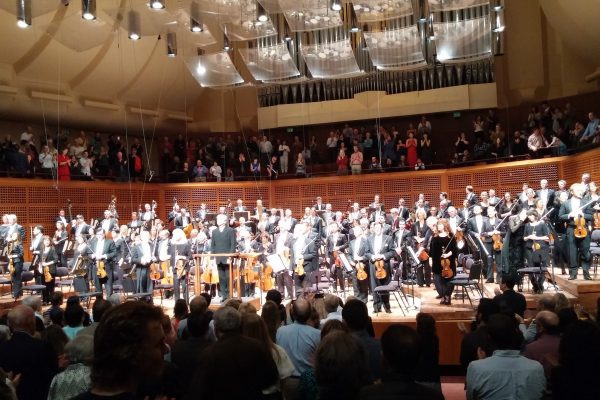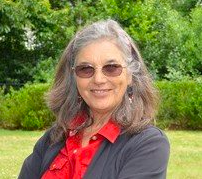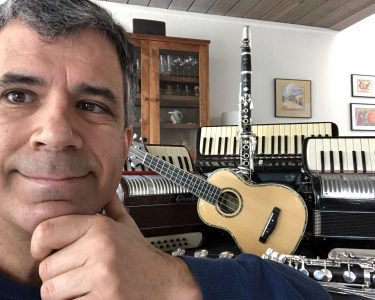
They’re renovating the park across from my house. It’s a two-square-block area that includes a playground, a soccer field, and two softball diamonds. I was worried, when they really tore it all out, that they’d use the space for something else, but today it’s almost done and the softball fields, one whole square block, are getting green again. Of course, they don’t seed the field these days; they just roll out huge swaths of lawn. Well, I hope it’s lawn, not plastic, but anyway, from here looking out my window it’s green and it makes me pretty happy. And it reminds me of baseball.
And baseball reminds me of music. No–really. Hear me out.
There was a time, seems like another lifetime now, but I used to be a baseball fan. For several seasons I went to a lot of games, and I have the score books to prove it.
I love the rhythm of baseball. I love that it simply takes three hours (well, with some pitchers, four), a stretch of time staring at that green expanse of the field that feels like a vacation. Exactly enough time to have the world go away – ahhhhh! – and feel refreshed and ready to dive back into life. And other than your scorebook and pencil, you don’t even have to pack.
I love how the sudden blossoms of action erupt out of nowhere. You take your eyes off the field at your peril. It seems like nothing’s happening, but then, wham! it’s over the fence. And of course, I like a good home run as much as the next guy, as long as the next guy is rooting for my team and it’s my team that hit it. But my favorite thing, by a long stretch, is a double play. There’s something about the way a team moves in the infield, they simply become one thing. They shift together before the pitch, they react together to the hit, partners in this dance, knowing as the ball comes off the bat exactly who will catch, where he’ll throw, where to be and exactly when to be there. Even though, yes they’ve practiced all the permutations a thousand times, still, this time is different, it’s particular, unique. The ball is just the connection between the players, it’s incidental: the infield play is communal, an understanding, a shared breath.
That’s how it’s so much like music. Yes, we all know the notes, and we know what to do, in theory – but when the time comes and you pitch that note, it might be slightly offline and I have to shift without even realizing to catch and pass it on. It’s those instantaneous adjustments that have to happen before you can even know they’re happening, you’re just playing and constantly adjusting to the ball in flight before it even gets hit, you somehow know where it’s going to be and you just be there on time to catch it.
One time it struck me, watching a string quartet, that they were playing each other’s instruments. Something about the trust between them, and how the musical gestures were passed among them, it really was like the bows were extending across the space between and touching their partners’ strings. Complete mind-sharing. I’ve heard and seen the same thing in jazz, too; it’s the unanimity of impulse and reaction, whether or not every note is written down.
That’s where the music is: in the rhythm and flow of our minds in complete sync without any possible thought getting in the way. And he’s OUT! Pass me the peanuts and Cracker Jack.
Lolly Lewis is a recording producer, amateur singer, and the founder of Amateur Music Network.

 I recently retired from teaching in the SFUSD public schools. When I first thought about writing a blog post for AMN, I thought I’d focus on the importance of music as a creative force in kids’ lives. For five years, I worked with a music educator from the SF Opera to create (write, compose, stage) a 15-minute opera, based on a social justice topic my 4th and 5th graders had studied all year. The topics ranged from Immigration to civil rights to the environment. It was one of the most transformative experiences some of my students had during their elementary years. But then I realized it transformed me as well, and actually set me up to pursue something I loved, but dreaded sharing, after I retired.
I recently retired from teaching in the SFUSD public schools. When I first thought about writing a blog post for AMN, I thought I’d focus on the importance of music as a creative force in kids’ lives. For five years, I worked with a music educator from the SF Opera to create (write, compose, stage) a 15-minute opera, based on a social justice topic my 4th and 5th graders had studied all year. The topics ranged from Immigration to civil rights to the environment. It was one of the most transformative experiences some of my students had during their elementary years. But then I realized it transformed me as well, and actually set me up to pursue something I loved, but dreaded sharing, after I retired. I’ve been a professional musician for so many years now that I’m not even sure I could figure out how long. I grew up in a family that was so passionate about music. Metropolitan Opera broadcasts blaring throughout the house during weekend chores, Boston Pops on PBS, folk singers visiting our house when my sister was a 1970s high school student, marching band practice, and the best-of-all story of family lore of my mom apparently putting me in a laundry basket underneath the piano while she accompanied her amateur singing friends from church and community theater: Fiddler on the Roof, Church hymns, Arthur Fiedler, and La Boheme are all just a big blur in my musical DNA.
I’ve been a professional musician for so many years now that I’m not even sure I could figure out how long. I grew up in a family that was so passionate about music. Metropolitan Opera broadcasts blaring throughout the house during weekend chores, Boston Pops on PBS, folk singers visiting our house when my sister was a 1970s high school student, marching band practice, and the best-of-all story of family lore of my mom apparently putting me in a laundry basket underneath the piano while she accompanied her amateur singing friends from church and community theater: Fiddler on the Roof, Church hymns, Arthur Fiedler, and La Boheme are all just a big blur in my musical DNA.